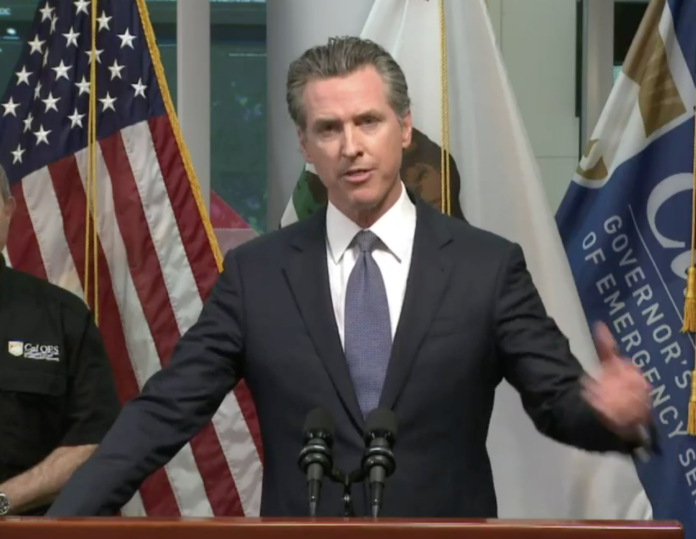By Eli Walsh, Bay City News
Gov. Gavin Newsom announced a new stay-at-home order Thursday that will be targeted at regions of the state with diminished intensive care unit capacity as the state attempts to slow its surge of new Covid-19 cases.
Counties with less than 15 percent of their ICU beds open and available will be subject to the order, according to Newsom, requiring the closure of nearly all nonessential businesses for at least three weeks.
Retail stores in areas affected by the order will be allowed to remain open at 20 percent of their maximum indoor capacity while most other nonessential businesses like hair and nail salons, restaurants, wineries and fitness centers would be required to close both indoor and outdoor operations.
Schools that have already reopened in-person classes will be allowed to continue and such decisions will be left to county officials, Newsom said.
“We do not anticipate having to do this again, but we really all need to step up, we need to meet this moment head-on and we need to do everything we can to stem the tide, to bend the curve and give us the time necessary … to get those vaccines in the hands of all Californians,” Newsom said Thursday in a briefing announcing the new order.
The stay-at-home order will be enforced at a regional level rather than by county, as the state’s pandemic-related health restrictions have been enforced for much of the year.
The regions include the Bay Area, greater Sacramento, Northern California, Southern California and the San Joaquin Valley. The counties in each region will be placed in the appropriate tier of the state’s pandemic reopening system, based on their case and test data, once they have reduced their ICU patient populations.
Four of the five regions are likely to pass the 15 percent threshold in the coming days, Newsom said, while the Bay Area is on pace to have less than 15 percent of its intensive care unit beds available by mid-December.
The formal details of the order come just days after Newsom and state Health and Human Services Secretary Dr. Mark Ghaly said California’s hospital and ICU systems were on track to be overwhelmed, and in some cases entirely full, by Christmas.
Ghaly said Thursday that the state’s rate of transmission has increased four-fold over the last six weeks and limiting movement and social mixing and interaction throughout the state will be key to curbing the current surge.
“It isn’t about single sector-by-sector and where is that spread happening,” Ghaly said when asked why some businesses that may not be responsible for spreading the virus will still be subject to closure under the order.
“We know that by reducing our overall movement and mixing for a short period of time, we can get the gains that we need to bend this curve,” he said.
Newsom framed the order as part of the “final surge” of new coronavirus cases as the state begins to receive hundreds of thousands of vaccine doses in the coming weeks.
The state is expected to receive its first shipment of roughly 327,000 vaccine doses from the pharmaceutical company Pfizer between Dec. 12 and 15 with more doses of vaccines made by pharmaceutical and biotechnology companies like Moderna and AstraZenica expected in the first quarter of 2021, Newsom said.
Given that the state’s first tranche of vaccine doses amounts to enough for less than 1 percent of California’s population, Newsom said the state’s working group overseeing vaccine safety and distribution has separated the first vaccine recipients into three tiers based on risk of contracting the virus.
Hospital workers, nursing and assisted living facility workers, paramedics and other emergency service personnel and dialysis center employees will be in the first tier to receive the vaccine’s two doses, according to Newsom.
The other two tiers include in-home health care workers, primary care clinic workers, laboratory workers, dental health clinic employees and pharmacy staff not working in higher-tier settings. Newsom said the state will also make a concerted effort to ensure the vaccine is available to every resident of the state, not just those with means.
“Help is on the way,” he said. “There is a light at the end of this tunnel.”















